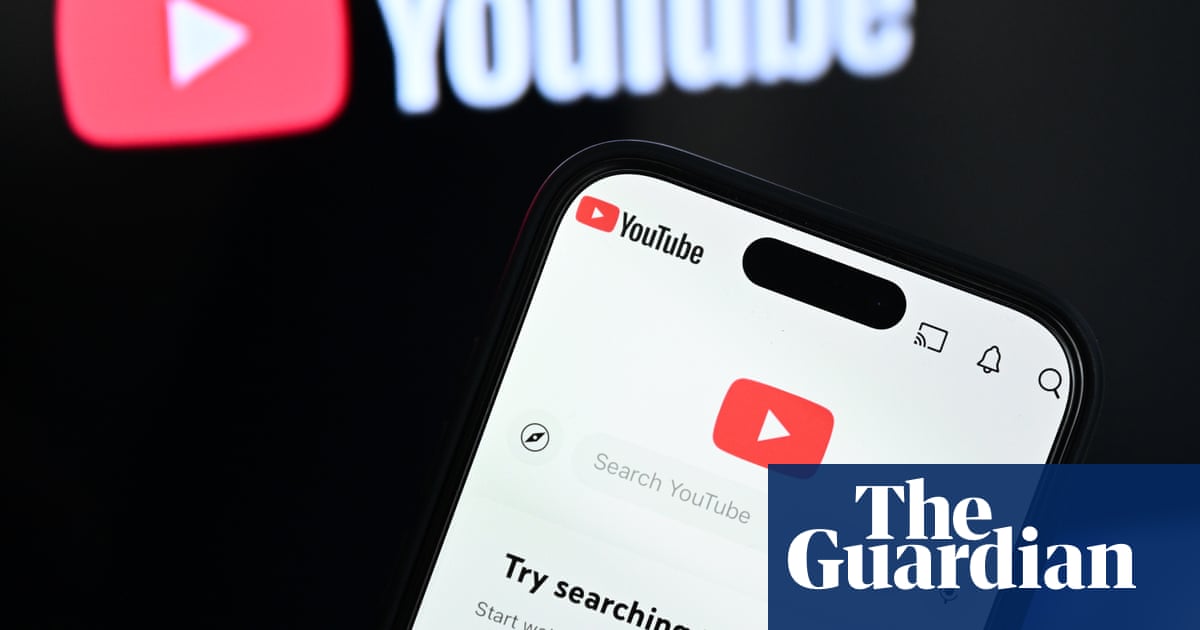Australia’s online safety regulator has recommendedYouTubenot be exempt from the under-16s social media ban, saying the video-streaming platform can expose children to harmful content.
But YouTube has said the government should stick by its draft rules which give the platform a carve out.
What are the arguments for and against regulating YouTube – and what will it mean for kids watching YouTube if it’s banned?
When the legislation to ban children under-16 from accessing social media was introducedin the federal parliament in November last year, the then communications minister Michelle Rowland said the government intended to exempt YouTube.
That was because YouTube had “a significant purpose to enable young people to get the education and health support they would need”.
The exemption cameless than 48 hours after direct lobbying of the ministerby YouTube’s global CEO, Guardian Australia revealed in April.
The move surprised YouTube’s rivals – Meta, TikTok and Snapchat – with TikTok arguing it was a “sweetheart deal”. YouTube offers a vertical video product similar to Reels on Instagram and TikTok and its competitors believed the site should therefore be included.
As part of the development on the rules around which platforms the social media ban applies to, the minister must consult with the eSafety commissioner, Julie Inman Grant.
Sign up for Guardian Australia’s breaking news email
Inadvice to the new minister, Anika Wells, released on Monday, Inman Grant said the regulator’s recent youth survey found 76% of 10 to 15-year-olds had used YouTube. The survey found 37% of those children who had seen or heard potentially harmful content online had found it on YouTube.
She also pointed to Black Dog Institute finding that higher daily hours spent on YouTube is associated with greater symptoms of depression, anxiety and insomnia.
“YouTube currently employs persuasive design features and functionality that may be associated with harms to health, including those which may contribute to unwanted or excessive use (such as infinite scroll, auto-play, qualitative social metrics and tailored and algorithmically recommended content feeds),” Inman Grant said.
“Separately and combined, these features may encourage excessive consumption without breaks and amplify exposure to harmful content.”
Inman Grant said there was not sufficient evidence that YouTube predominantly provides beneficial experiences for children under 16.
The advice noted, however, that children would still be able to watch videos YouTube if they were logged out, as the legislation is limited to preventing children from having accounts.
Ina statementreleased after Inman Grant’s advice was released, YouTube’s Australia and New Zealand senior manager for public policy, Rachel Lord, said the legislation was considered and agreed to by the parliament on the understanding YouTube would be exempt and the advice “goes against the government’s commitment” as well as research on community sentiment that there is “broad agreement that YouTube is suitable for younger users”.
YouTube said it has been building age-appropriate products for more than a decade and in the first quarter of 2025, the company removed 192,856 videos for violating its hateful or abusive policies, up 22% year-on-year.
The company argued it is fundamentally a video distribution and hosting platform – not one to primarily facilitate social interaction. YouTube argued an August survey of Australian teachers found 84% use YouTube on at least a monthly basis to help students learn.
YouTube said eSafety and potentially the communications minister might be seeking to change the position on exemption following pressure tactics from YouTube’s rivals.
YouTube has argued it has a specific age-appropriate platform called Kids which disables the ability for users under the age of consent from uploading content or writing comments.
The company has not specifically sought a carve out just for its Kids product.
When Inman Grant was asked about YouTube Kids at the National Press Club on Tuesday and whether platforms considered low-risk, designed with a child in mind and with ample safety features could be excluded from the ban, she said she “can’t answer definitively until I see the rules”.
Yes. Inman Grant said if a teacher in a school wants to show a video to school kids, they can access YouTube without logging in.
She said YouTube had “mastered those opaque algorithms driving users down rabbit holes they’re powerless to fight against” and accessing the site logged out would “harness the positives” and allow people to engage without the technologies designed to make social media addictive.
The minister will finalise the rules and decide which platforms the ban will apply to in the coming months.
The trial on age assurance technology is expected toreport to the minister by the end of July, which will determine which technologies the platforms must use to keep under 16s off their services.
The government has said the ban will come into effect in early December.
